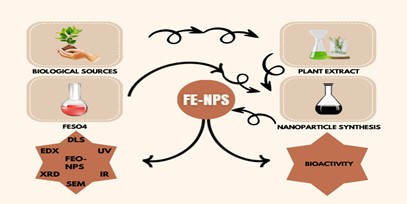
Keywords
Antioxidant activity,FeO-NPs,Hibiscus rosa-sinensis,green synthesis,CharacterizationHow to Cite
(1)
Singh, A.; Bharti, R.; Thakur, A.; Verma, M.; Sharma, R. Leaf Extract Mediated Green Synthesis of Iron-Oxide Nanoparticles (FeO -NPs) by Using Hibiscus Rosa-Sinensis (China rose): A Potential Approach and Its Biological Application . Orbital: Electron. J. Chem. 2025, 16, 271-278.




The aim of this study was to synthesize iron oxide nanoparticles (NPs) using an aqueous extract obtained from the leaves of Hibiscus rosa-sinensis, commonly known as China rose. By employing an environmentally friendly approach, the production of small-sized and highly stable FeO-NPs was achieved, offering promising prospects for environmental preservation by eliminating the need for harmful chemicals. The synthesis process involved the extraction of the plant material through decoction, followed by the reaction with ferrous sulphate (FeSO4) at room temperature for one hour. Various analytical techniques, including Fourier transform infrared spectroscopy (FTIR), UV-visible spectrophotometry (UV-Vis), X-ray diffraction (XRD), and scanning electron microscopy-energy dispersive X-ray analysis (SEM-EDX), were employed to characterize the synthesized FeO-NPs. Additionally, their antioxidant activity was evaluated against 2,2-azino-bis-3-ethylbenzothiazoline-6-sulphonic acid (ABTS) and 2,2-diphenyl-1-picrylhydrazyl (DPPH). The results indicated that FeO-NPs derived from Hibiscus rosa-sinensis possessed significant antioxidant properties, suggesting their potential utility in various applications.
留言 (0)